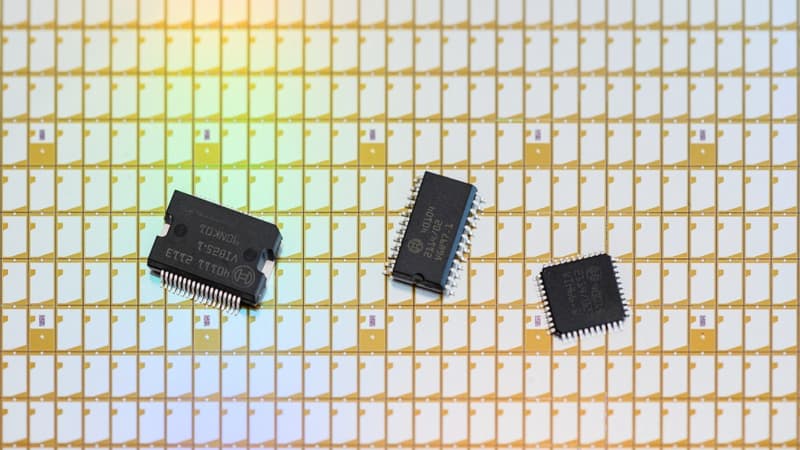This may be the promise, for the United States, to break its dependence on imports of certain advanced electronic components: Joe Biden travels to Arizona on Tuesday, December 6, to celebrate a gigantic investment by the Taiwanese group TSMC in a semiconductor factory.
“It’s more than a groundbreaking ceremony, it’s about building an ecosystem in the United States” for these essential components for the proper functioning of all electronic devices, the US president’s top economic adviser, Brian Deese, told traveling reporters. in the Air Force. A.
An investment increased from 12 to 40 billion dollars
In Phoenix, the 80-year-old Democrat will be surrounded by the cream of the industry, with Apple chief Tim Cook at his side, among others, to represent semiconductor consumers, but also representatives of lesser-known companies. general public but highly strategic in the technological world such as Micron, AMD or Nvidia.
TMSC, which had already decided to settle in Arizona, a state in the southeastern United States, in May 2020, during the Trump presidency, announced on Tuesday that it was giving a new dimension to its project.
There will be two factories instead of just one, tripling the amount of the investment, which goes from 12 billion to 40 billion dollars. Production is supposed to start there in 2024 for the former, in 2026 for the latter.
In all, the Taiwanese company plans to create “10,000 high-paying high-tech jobs,” including 4,500 directly at TSMC.
But all this goes “beyond semiconductors,” Brian Deese said, praising Joe Biden’s policy of industrial and technological recovery.
A very political trip to Arizona
According to him, the president will be willing to explain, “in very concrete terms”, how this type of giant investment energizes an entire region “for years”.
For the White House, TSMC’s announcement, the latest in a long series of massive investments announced by multinationals, is the direct result of the pharaonic “CHIPS and Science Act”, a law that provides for nearly 53,000 million dollars for production and research. in the microchip industry.
The displacement of Joe Biden, who maintains the suspense over a new candidacy for the presidential elections, is also very political. Arizona, a state long dominated by Republicans, has become a battleground where Democrats are regaining ground.
Most of the US supply of semiconductors comes from companies located in allied Asian countries, but the remoteness of the producers, as well as geopolitical tensions around Taiwan, push Washington to reduce its dependence.
Not to mention Joe Biden’s declared desire to regain, at least in part, technological ground lost to China.
Respond to all American demand
“Virtually every big tech company, including auto companies and every company that uses technology, is concerned that something is going on between Taiwan and China,” says analyst Rob Enderle.
Construction of a semiconductor site takes several years. But once TSMC’s two factories are up and running, “they could meet all of America’s demand for the most advanced chips,” said Ronnie Chatterji, deputy director for Industrial Policy at the National Economic Council.
If Joe Biden is a follower of uninhibited economic patriotism – his initiatives also send chills among his European allies – he claims to approach the issue differently from his predecessor Donald Trump, who had bet everything on tax cuts.
Eliminating this “leakage” approach, the Democrat relies instead on massive subsidy schemes to boost private investment.
However, this outpouring of public money is accompanied by “strong expectations,” Brian Deese said. “There are strong conditions for the companies that will benefit from the financing,” said the adviser to Joe Biden.
Source: BFM TV


